
Bacterial skin infections represent a common condition affecting the canine and is often recurrent. The infective organism most frequently isolated is Staphylococcus intermedius although other species of staphylococcus may be involved.

Bacterial skin infections represent a common condition affecting the canine and is often recurrent. The infective organism most frequently isolated is Staphylococcus intermedius although other species of staphylococcus may be involved.
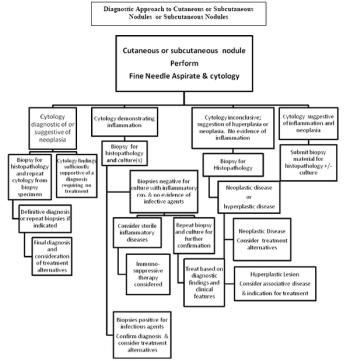
Cutaneous or subcutaneous nodules are relatively common problems in the dog and cat with assorted etiologies to be considered. The diagnostic pursuit is often critical to attaining a definitive diagnosis for optimal clinical management.

The combination of clinical diseases observed in pruritic dogs has been a consistent finding over the decades. The occurrence of the atopic dog with flea allergy dermatitis and secondary bacterial pyoderma led to the common expression in th '80's of the Southeastern Triad not that the S.E. has any royalty rights to this combination of clinical problems.
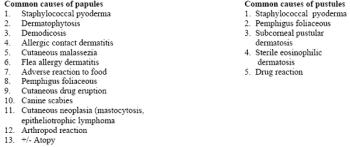
Diagnosis of pruritic dermatopathies requires the dedication of collecting an historical account of the problem complete with all interrelationships of seasonality, in-contact animals, human disease and treatment, including specific drugs, treatment regimens and therapeutic outcome.

Despite the advent of newer demodicidal therapeutics, management of the chronic relapsing or refractory demodicosis cases remains a frustration. Conservative therapy continues to represent the preferred approach to localized demodicosis in the juvenile. Benzoyl peroxide gel or cream is often selected as an initial choice.
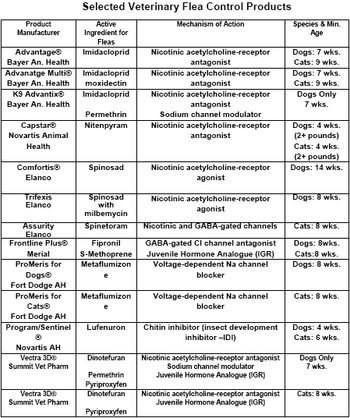
Flea allergy continues to be a common condition affecting dogs and cats despite the major advances in the understanding of flea biology, the immune mechanisms of flea allergy and the availability of newer chemicals providing more optimal flea control.

Atopic dermatitis, also known as atopy and previously called allergic inhalant dermatitis, is considered to be a genetically based condition whereby the animal develops an IgE antibody response to environmental proteins resulting in disease, most commonly allergic dermatitis.

The pruritic cat often poses a challenge for the clinician as there is often no one distinctive pattern that provides the diagnostic criteria leading to a conclusive diagnosis.

Diseases of the ear represent a majority of cases observed in practice and often with accompanying integumentary involvement.
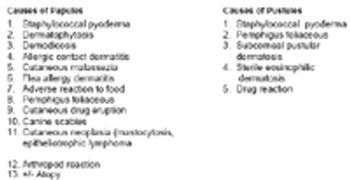
Diagnosis of pruritic dermatopathies requires the dedication of collecting an historical account of the problem complete with all interrelationships of seasonality, in-contact animals, human disease and treatment, including specific drugs, treatment regimens and therapeutic outcome.

Despite the advent of newer demodicidal therapeutics, management of the chronic relapsing or refractory demodicosis cases remains a frustration.
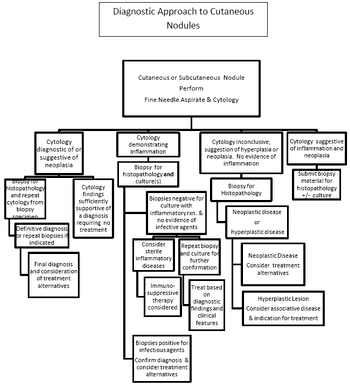
Cutaneous or subcutaneous nodules are relatively common problems in the dog and cat with assorted etiologies to be considered.
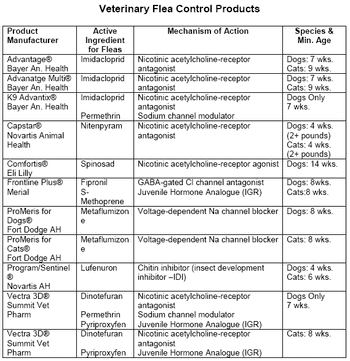
Flea allergy continues to be a common condition affecting dogs and cats despite the major advances in the understanding of flea biology, the immune mechanisms of flea allergy and the availability of newer chemicals providing more optimal flea control.
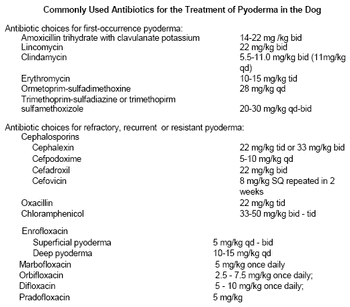
Bacterial skin infections represent a common condition affecting the canine and is often recurrent.

Published: November 1st 2009 | Updated:

Published: November 1st 2009 | Updated:

Published: November 1st 2009 | Updated:
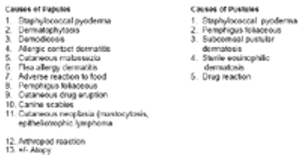
Published: November 1st 2009 | Updated:

Published: November 1st 2009 | Updated:

Published: November 1st 2009 | Updated: